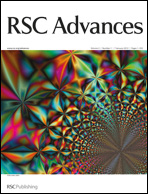The electrochemical dealloying of single-phase Al2Au alloy in 1 M sodium halide (NaF, NaCl, NaBr and NaI) aqueous solutions at 270, 290 and 340 K has been systematically investigated in this work. The effects of halide ions and temperature on the dealloying behavior have been studied with electrochemical methods like open-circuit potential measurements and dynamic polarization tests. Nanoporous gold (NPG) with a typical three-dimensional, bicontinuous, interpenetrating ligament-channel structure can be obtained from the single-phase Al2Au alloy by electrochemical dealloying in the NaCl, NaBr, and NaI solutions. In addition, the dealloyed NPG samples and the samples after coarsening at ambient conditions were characterized using field-emission scanning electron microscopy (FESEM). Morphological features like cracks and ligament sizes in NPG have been discussed. Furthermore, NPG samples that were almost free of cracks have been successfully prepared in the NaI solution at 340 K. Besides, based on the surface diffusion controlled coarsening mechanism, the surface diffusivities of gold adatoms along the alloy–electrolyte interfaces during dealloying have been evaluated in this work, as well as the activation enthalpy and activation entropy.

You have access to this article
 Please wait while we load your content...
Something went wrong. Try again?
Please wait while we load your content...
Something went wrong. Try again?


 Please wait while we load your content...
Please wait while we load your content...